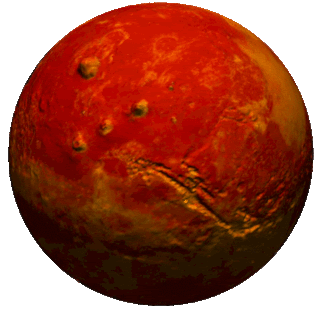Arsia Mons stands as a captivating shield volcano situated on the Tharsis volcanic plateau on Mars, contributing to the diverse and intriguing geological landscape of the Red Planet. Its distinct features and geological history provide valuable insights into Mars’ volcanic activity and the forces that have shaped its surface.
Arsia Mons stands as a remarkable geological feature that enriches our understanding of Mars’ past and present. Its towering presence and distinctive features provide a window into the planet’s complex geologic history and its ongoing processes. The study of Arsia Mons contributes to our broader understanding of planetary geology, volcanic activity, and the intricate forces that have shaped the landscapes of worlds beyond our own.
Location
Tharsis volcanic plateau, Mars
Physical Characteristics
Rising to an elevation of around 9 miles (14 kilometers) above the surrounding Martian plains, Arsia Mons is a prominent shield volcano with a broad, gently sloping profile. Its surface area covers a significant portion of the Tharsis plateau, and its flanks radiate outward from its central vent in a symmetrical pattern. The result of successive lava flows, the shield-like shape of Arsia Mons is characteristic of volcanic activity on Mars.
Formation and Geological Significance
Arsia Mons owes its origins to the planet’s complex geological history and volcanic processes. As molten rock from Mars’ mantle welled up to the surface, successive eruptions led to the accumulation of lava layers, gradually forming the shield volcano’s distinct shape. The volcano’s geological history holds vital clues about Mars’ tectonic activity, volcanic evolution, and the broader processes that have shaped the planet.
Surface Features
The surface of Arsia Mons showcases a variety of intriguing geological features that have emerged from its volcanic past. Lava flows have sculpted the volcano’s slopes, forming extensive plains and channels that offer insights into the movement of molten rock across its surface. The volcano’s flanks also exhibit evidence of collapsed lava tubes, further enhancing its unique topography.
Exploration and Study
Arsia Mons has been a focal point of scientific exploration and study through Mars exploration missions. Data collected from spacecraft, orbiters, and rovers have provided valuable information about the volcano’s composition, age, and volcanic history. These insights help scientists piece together the puzzle of Mars’ geologic evolution and the role that volcanic activity has played in shaping its landscape.
